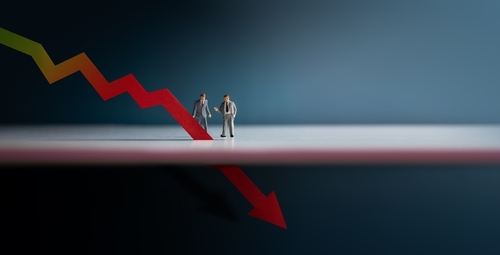
Monetary Policy & Inflation | US

Monetary Policy & Inflation | US
US Treasury yields rose on Friday despite the Federal Reserve’s (Fed) preferred inflation measure, PCE, rising +4.4% YoY for December compared to +4.7% YoY for November.
This article is only available to Macro Hive subscribers. Sign-up to receive world-class macro analysis with a daily curated newsletter, podcast, original content from award-winning researchers, cross market strategy, equity insights, trade ideas, crypto flow frameworks, academic paper summaries, explanation and analysis of market-moving events, community investor chat room, and more.
US Treasury yields rose on Friday despite the Federal Reserve’s (Fed) preferred inflation measure, PCE, rising +4.4% YoY for December compared to +4.7% YoY for November. Markets also digested a stronger-than-expected Q4 GDP print (+2.9% QoQ versus +2.8% QoQ expected). Overall, since the December 2022 FOMC meeting, lower inflation and strong employment growth have created an ambiguous macro backdrop that decisively validates neither hawks nor doves. A busy data and Fed week lie ahead, chief of which includes the 1 February FOMC meeting and January NFP data (Friday) – Dominique expects a 25bp hike and NFP to continue to slow closer to labour supply.
Turning to market moves, US 10Y yields closed the week at 3.52% (+4bps WoW) compared to 4.19% (+5bps WoW) for the 2Y and 4.57% (flat WoW) for the 3M. Important parts of the yield curve remain deeply inverted. The magnitude of the 2s10s inversion sits at -67bps while that of the 3M10Y part of the yield curve sits at -105bps. The probability of recession increases with yield curve inversion.
Our recession model, which uses the 2Y10Y part of the yield curve, assigns an 87% chance of a recession within the next twelve months (Charts 1 and 3). Meanwhile, the Fed recession model, which uses the 3M10Y part of the yield curve, produces a 57% chance of recession (Chart 2). Notably, both models are producing recession probabilities higher than that of the 2007-2008 Global Financial Crisis (GFC).
We introduced two models for predicting US recessions using the slope of the US yield curve. When long-term yields start to fall towards or below short-term yields, the curve flattens or inverts. This has often predicted a recession in subsequent months. Our model is based on the 2s10s curve compared to a model from the Fed that is based on 3M10Y curve. We believe that the 2Y better captures expectations for Fed hikes in coming years and is therefore more forward-looking.

Spring sale - Prime Membership only £3 for 3 months! Get trade ideas and macro insights now
Your subscription has been successfully canceled.
Discount Applied - Your subscription has now updated with Coupon and from next payment Discount will be applied.